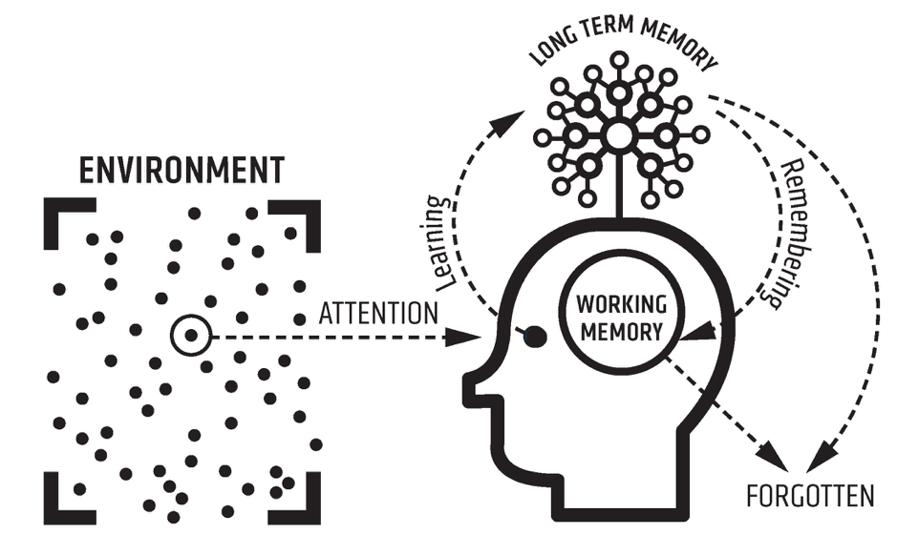
4 minute read
Maximising Foreign Language Learning
By Celine Courenq, Head of Faculty, World Languages
Did you know that 40 percent of what you have just learnt is forgotten after 20 minutes? How can we then ensure a meaningful and carefully crafted World Languages curriculum in order to maximise learning for our learners?
This was one of the topics discussed during our FOBISIA JAWS workshop in November 2019 where we had the privilege to welcome Dr Gianfranco Conti, an international keynote speaker and author of several books on language acquisition. We learnt how the memory works, specifically looking at the differences between ‘working memory’ and ‘long term memory’ and ‘the forgetting curve’.
What does a Key Stage 3 World Languages classroom lesson look like?
We begin a lesson with a retrieval practice task to recall previous learning: a “starter” activity can strengthen previous learning and lead to fluent recall. Language lessons follow on each other and require students to learn and memorise chunks of vocabulary and structures on a daily basis with retrieval practice.
We ask a large number of questions and check the responses of all students
Using mini-whiteboards provides instant feedback on students’ understanding. Another approach, asking students not to put their hands up and choosing who to question ensures of all students but also addresses any gaps in students’ isolation, that would mean they can only remember and recall five words. However, if we teach them five sentences as per the Conti approach, then they can potentially remember and recall 15-25 words. New language is introduced gradually in small chunks and steps using extensive modelling with thorough practice of pronunciation and new structures until it is firmly embedded.
Example of Sentence Builders:
We present new material in small steps with students practice after each step to manage Cognitive Load

In World Languages we are now working on presenting new language using our Sentence Builders which introduce vocabulary in sentences rather than as individual items, so students
If we consider that students can remember only five pieces of information at a given time, then if we teach words in
every students’ understanding and progress is checked. These techniques not only ensure that teachers check understanding know how to use them in the context and real-life situations.
knowledge or misconceptions.
We provide models
Models and worked examples help students learn faster. Extensive modelling and awareness raising of new language
using number of activities such as ‘I say – you say’; I start a sentence you finish and the teacher utters sentences and students highlight what they hear with lots of modelling/dictations and translations using mini-whiteboards etc.
We guide students’ practice.
Teachers spend more time guiding students’ practice of new material. Allow students a lot of guided practice using variety of activities such as: spot the error, spot the missing details, spot the difference, one pen one dice translation etc.
Example of some of the activities for Receptive Processing
We provide scaffolds for difficult tasks
Introduction of tasks is often scaffolded in language learning and provides students with temporary support. This scaffold is then gradually withdrawn depending on classes and when students become more confident with the new language and structures.
An example of Gianfranco Conti’s Oral Scaffold adapted to German We require and monitor independent practice
Students need extensive, successful and independent practice for knowledge and skills to become automatic. Whilst delivering the Conti style lessons, and because we are extensively practising pronunciation and key structures, students are more willing to read and speak aloud. They are not too worried about making mistakes and they are definitely motivated.
They are confident with the language that they are learn-


ing and are more spontaneous using it. We engage students in regular low stake assessments

We only test what students have learned, keeping input comprehensible.
We make sure tests can be marked quickly and we record results carefully to enable us to have an idea of a student’s progress. We ensure we use test results and analyse them to help guide our future teaching. As a result, this enables us to adapt to what the students know or need to review continuously.
We review our Key Stage 3 Schemes of Learning
It is important to regularly revise and review previously learnt material. It is also crucial to allow students more time to practice new material in order for it to be stored into the long -term memory. We are working on adapting our Key Stage 3 SOL to ensure that we do so.










